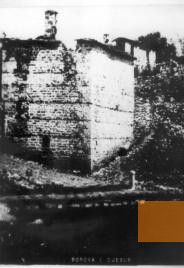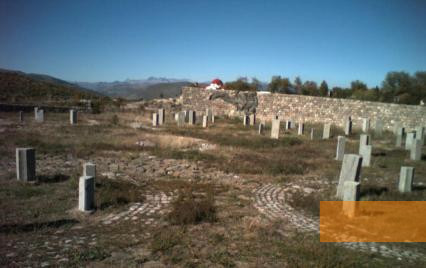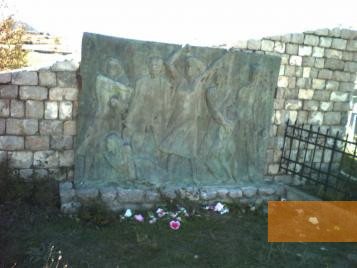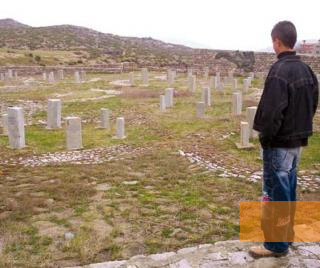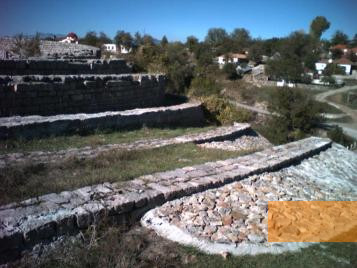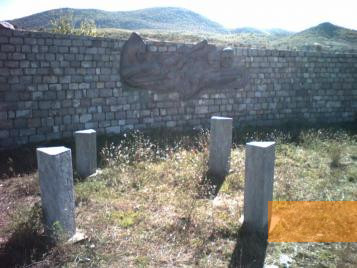A large memorial, a small museum and a remodelled cemetery in the south Albanian mountain village of Borovë commemorate the 107 village residents who were murdered by the members of the German Wehrmacht as part of »reprisal measures« carried out on July 6, 1943.
In the late afternoon of July 6, 1943, communist partisans opened fire on German troops, at the time stationed in Italian-occupied Albania, in the area of Borovë, close to the Greek border. 4 soldiers were lightly wounded. In a »reprisal action«, members of the 1st Mountain Division of the Wehrmacht attacked Borovë - which had been founded in 1912 and comprised 100 stone houses, an orthodox church and a school - and almost completely burned it down using flame throwers. Some of the village residents died in their houses; those trying to escape were chased back into the flames. The majority of those killed were small children, women and elderly people. This massacre is at times referred to as the »Albanian Lidice«, referring to the annihilation of the Czech village in 1942. It is considered the gravest crime of the Wehrmacht against Albanian civilians.
The memorial and museum are dedicated to the 64 female and 43 male residents of Borovë, aged between four months and 80 years, who were murdered by Wehrmacht soldiers on July 6, 1943.
After the liberation of Albania in 1945, the victims were buried on the village cemetery. A small museum and a monumental Stalinist memorial were set up in Borovë. The memorial plaque states that the first Albanian resistance against the National Socialist regime came about in the village. Albanian composer Thoma Gaqi wrote the »Poema Simfonike Borova« symphony in honour of the victims. In the 1990s, the local authorities erected a perimeter wall for the cemetery using rubble from the burned down houses. In the meantime, individual gravestones were installed for the victims. In August 1999, the memorial complex was restored by Bundeswehr soldiers who were part of the KFOR peacekeeping force and reopened with a commemorative ceremony.
- Name
- Përkujtimore për viktimat e masakrës së Wehrmacht
- Open
- The complex is always accessible.


